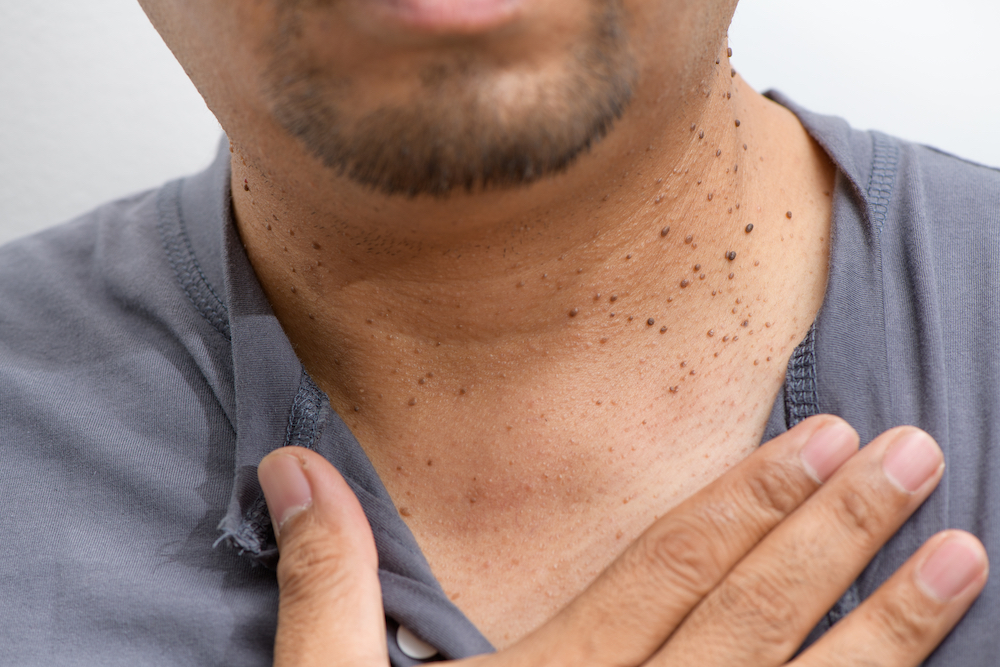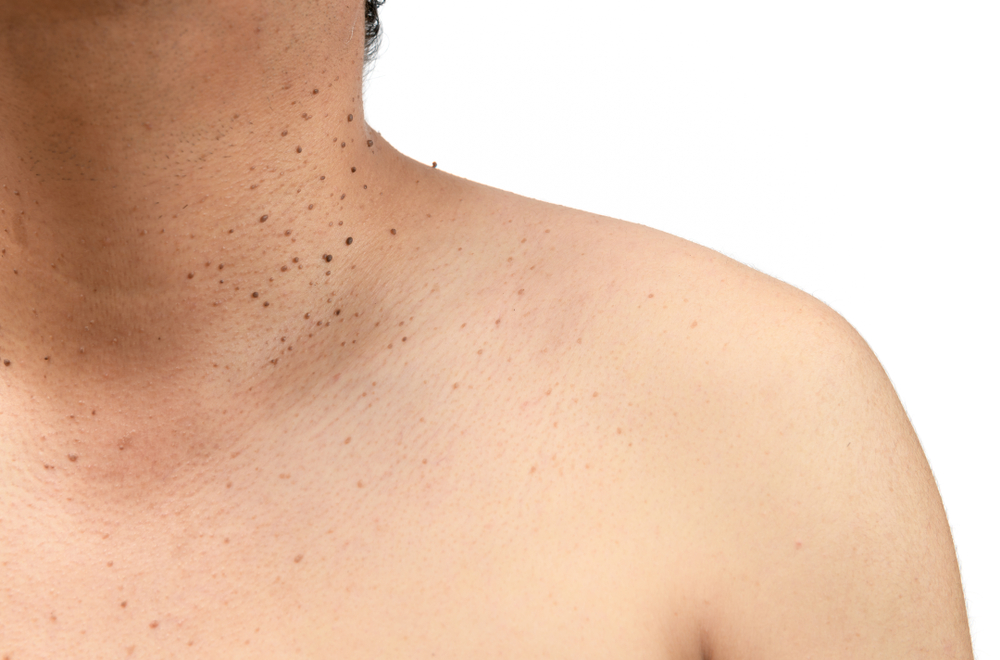Is Skin Condition Dermatosis Papulosa Nigra Treatable?

Better known as DPN, this skin condition shows up as black or brown “tags” around the cheeks, forehead, eyes, back, chest and neck. Although they are not the same as skin tags, they are commonly elevated slightly above the skin’s surface. This similarity to skin tags in the way they hang is also often self-diagnosed as moles even though they are not classified as moles by those in the professional field. Although each one is small individually, there are typically many, which results in people seeking treatment options and advice from a board-certified dermatologist. The good news is that DPN is entirely treatable, and any concerns around these papules can be addressed through a local dermatology office.
DPN is not dangerous or contagious, but those seeking to address the skin condition are primarily concerned with the cosmetic aspect. Multiple treatments are available, but no one treatment works for every patient. An excellent dermatologist will create a relationship with her patients, asking about allergies and other relevant information that will help find the best solutions for concerns. Results will vary between patients but working with a reputable and established dermatology office allows the highest quality care available.
Darker Skin Experiences More DPN Cases
Scientists do not know exactly why DPN affects patients with darker skin more than those with lighter skin. However, Dermatosis Papulosa Nigra affects 30-35% of those with darker skin tones. Finding an experienced dermatologist working with all skin tones is essential to successful removal and treatment. Dr. Sherry Straughn has been helping patients with darker skin tones in Atlanta for more than 25 years. She is a member of the Skin of Color Society, specializing in Black and darker skin patients with conditions and concerns. Dr. Straughn understands first-hand the unique nuances of those with darker skin and recognizes the urgency to address any concerns. Buckhead Dermatology prioritizes seeing patients quickly, not making people wait weeks to see a professional.
Dermatosis Papulosa Nigra Increases with Age
 These spots commonly begin to appear in the teenage years of patients and increase as people age. These spots typically grow in size and number over time. It is thought to be highly possible the skin condition is hereditary, and most patients claim older generations have had the skin condition. The skin condition also affects women more than men but typically affects patients with darker skin tones, including Asians, African Americans, or East Asians. Again, DPN is not dangerous, and there is no harm in leaving these spots alone. They have not been shown to have any complications if they remain. However, as they grow, they can become itchy and irritate some patients, which leads to picking. Removal without a professional doing the procedure can leave skin vulnerable to infection. If there are signs of skin infection after accidentally removing one, seek an experienced dermatologist immediately.
These spots commonly begin to appear in the teenage years of patients and increase as people age. These spots typically grow in size and number over time. It is thought to be highly possible the skin condition is hereditary, and most patients claim older generations have had the skin condition. The skin condition also affects women more than men but typically affects patients with darker skin tones, including Asians, African Americans, or East Asians. Again, DPN is not dangerous, and there is no harm in leaving these spots alone. They have not been shown to have any complications if they remain. However, as they grow, they can become itchy and irritate some patients, which leads to picking. Removal without a professional doing the procedure can leave skin vulnerable to infection. If there are signs of skin infection after accidentally removing one, seek an experienced dermatologist immediately.
Treatments for Removal of Dermatosis Papulosa Nigra
Treatments for DPN are quick and reasonably simple procedures that offer immediate and satisfying cosmetic results. Once these spots are removed, patients report new confidence and feel they look younger than before. As with any treatment plan, there may be side effects, and you should work with someone who can be honest and upfront so the best decision can be made with complete transparency. The best dermatologist will go over all options, risks, and potential side effects with each unique patient. The removal may cause scarring, blotchy skin, or depigmentation, which is also a condition that affects patients with darker skin.
Some treatments are as simple as removing the spots with a professional scraping tool, which can discolor the skin underneath. Some treatments use electric currents that burn the spots, destroying the unwanted tissue. Cryosurgery freezes the papule and is similar to wart removal procedures. Laser removals use light frequencies to precisely target the papules, which develop into a scab that falls off. The most expensive of treatments, leaser remains one of the most common choices for patients wishing to remove spots on the body caused by DPN due to reports of permanent removal that lasts and seemingly more minor skin discoloration. If the removal causes any darker discoloration on darker skin patients, it can be treated with a topical fading cream provided by a licensed dermatologist.
Since DPN is not dangerous or cancerous, patients have the freedom to choose whether or not to have the spots removed. Even if a teenager embraces their skin with the spots, they may decide to have some, or all removed later in life. Because treatments are easy and done in the office with a dermatologist, patients get to choose if, when, and how to address any DPN concerns. Do some research and find a local dermatologist who can discuss any concerns with you.
